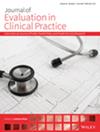Research Progress on the Conceptual Evolution, Theoretical Modelling and Measurement Tools of Electronic Health Literacy
Abstract
Objective
This study aimed to collect and analyse electronic health (eHealth) and eHealth literacy (eHL)-related research, expound the development of eHL evaluation tools at home and abroad, provide reference for the theoretical and applied research of eHL in China and promote the improvement of eHL in the Chinese population.
Methods
By collating relevant research articles, the concept evolution, theoretical models and development of eHL at home and abroad were analysed and summarized; furthermore, the content, measurement performance and application of eHL were explored.
Results
The concept of eHL has not yet been generally recognized. There are six known theoretical models of eHL, namely the Lily Model, the Comprehensive Model of eHealth Literacy, Andersen's Behavioural Model of Health Services Use, the eHealth Literacy Extended User–Task–Context Matrix Model, the Comprehensive Model of eHealth Utilization and the eHealth Literacy Interactive Model. The above models have matured through research but have not been fully evaluated and empirically studied. The assessment tools of eHL, such as the eHealth Literacy Scale, Digital Health Literacy Instrument and Electronic Health Literacy Assessment Toolkit, are diverse for different populations and types of application scenarios; however, although the scales are rich, they are not ideally suited for use in China. Therefore, the concepts, models and scale tools for eHL continue to be explored and investigated.
Conclusion
At present, definitions of eHL-related concepts exist, and the models and measurement tools of eHL are diverse and rich; however, it is necessary to continue to explore the measurement tools suitable for Chinese people and enrich the theoretical basis and models in China.

 求助内容:
求助内容: 应助结果提醒方式:
应助结果提醒方式:


